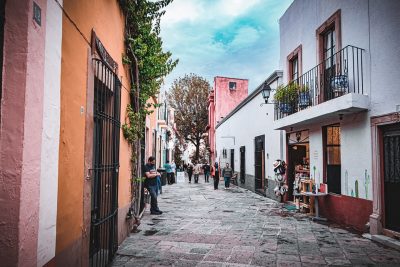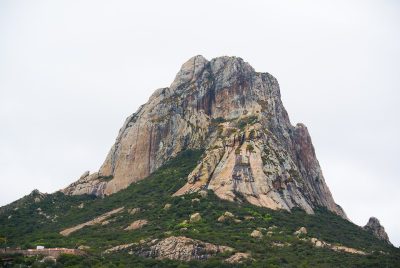Queretaro is a state in central Mexico just two hours from Mexico City. It has great relevance for the history of the country thanks to the conspiracies that took place in its capital to begin the independence of Mexico. It’s for this reason that Queretaro is full of buildings, monuments, parks and museums dedicated to the art, history, and culture of the nineteenth and twentieth centuries, not to mention great Queretaro hotels.
It’s in Queretaro where the Sierra Gorda begins, a mountain range that extends into Hidalgo, San Luis Potosí, and Guanajuato. This natural area is protected and is one of the most beautiful and easy to visit for all ages. The capital, Queretaro (officially called Santiago de Queretaro), has endless activities for the whole family. It began as an industrial area since it’s located just a short drive from other major cities, including Mexico City. Today, a modern city with a colonial look.
Table of Contents
Historic Center of Santiago de Queretaro
The capital of Queretaro has grown in the last twenty years to become a city of more than 1.5 million people. It’s here that in the early nineteenth century plans were made to begin Mexico’s independence movement. In the Casa de la Corregidora (the wife of a type of administrator of the Spanish empire between the sixteenth and twentieth centuries) Josefa Ortiz de Dominguez conspired against the Spanish empire and should be the first stop in downtown Queretaro. Today it’s the seat of the state government and is located in the Plaza de Armas, the main square. On the same street is the Conspirators’ Museum, where you may learn more about what happened at the independence meetings and their attendees.
This area of Queretaro is easily walkable and still preserves its colonial architecture. To the west of the Plaza de Armas is a whole area with museums of different themes. The Museo de Arte de Queretaro (MAQRO) housed in a former cloister—which makes a visit to the building alone worthwhile—also serves as a cultural center and houses art from the seventeenth to the nineteenth centuries. Also recommended are the Museum of the Restoration of the Republic, located in a former convent, the Museum of Sacred Art, the Teatro de la Republica, and the Cathedral.

Cerro de las Campanas (Hill of the Bells)
The Cerro de las Campanas is another of Queretaro’s attractions. It’s an urban park and has a chapel at the top built by the Austrian government that can only be visited from the outside. In this hill live 240 species of plants and animals, 52 of them considered exotic, and at least eight of them are in some category of risk.
The curious thing about Cerro de las Campanas is its name. It’s so called because of the sound the rocks make when they collide with each other. As they have a high content of metallic minerals, they sound like bells. A curious aspect of a beautiful park to enjoy the visit.
Peña de Bernal
After a one-hour drive from downtown Queretaro you may find the small town of Bernal. One of the stops on the Cheese and Wine Route, this is an excellent place to sample the gastronomy of the region (especially the cheeses and wine). However, the attraction of this place is the Peñol de Bernal, the third largest monolith in the world.
Before visiting a museum of masks and of typical Mexican sweets, you can visit the monolith and climb it halfway up to have a magnificent view of the Sierra Gorda and the surrounding area. Some nights there is a show of dancing fountains with the Peña de Bernal in the background.

Sierra Gorda Biosphere Reserve
The Sierra Gorda mountain range has altitudes of more than 3,000 meters above sea level, with an average altitude of 1,500 meters above sea level. Since 1997 it has been a protected national area and is a reserve that may be visited.
There are areas for camping or simply for hiking and tours. The most notable parts are Puente de Dios (Bridge of God) on the Escanela River (a trail with a hike of approximately 40 minutes), the Cuatro Palos viewpoint, and El Chuvejé waterfall with a drop of 30 meters (98.4 feet). Any of them makes a great mountain trail to connect with nature.
Franciscan Missions
Also in the Sierra Gorda are five Franciscan missions built between 1750 and 1760 by Junipero Serra, who also founded the most important missions in California. They are UNESCO World Heritage Sites and are located in five towns in the Sierra. The first was the Jalpan Mission, followed by the Conca Mission, the Tilaco Mission, the Tancoyol Mission, and the Landa Mission.
In addition to their historical importance, their architecture is a mixture of Spanish and indigenous art and iconography. The tour of each of them is a great experience for anyone interested in religious art.













